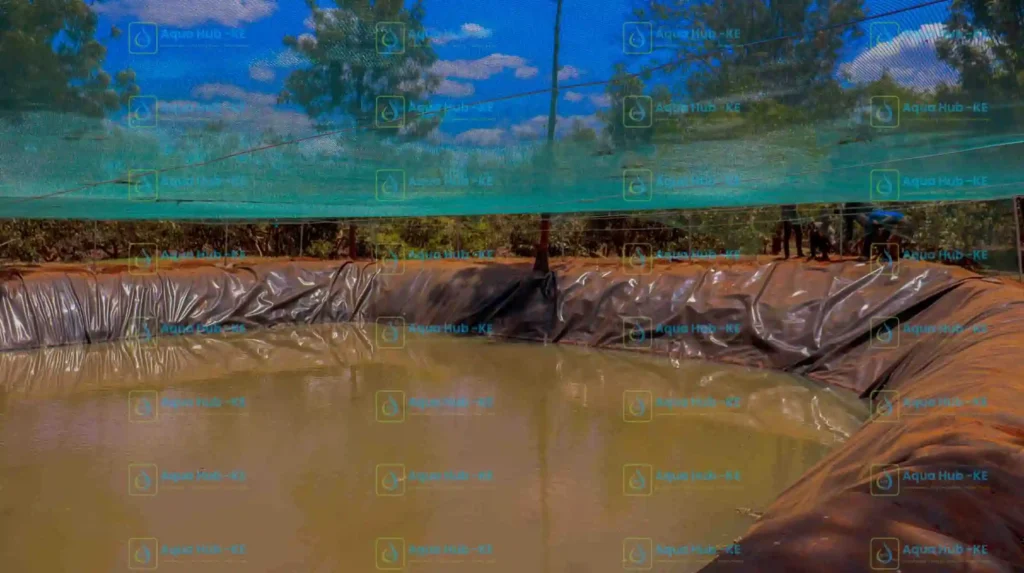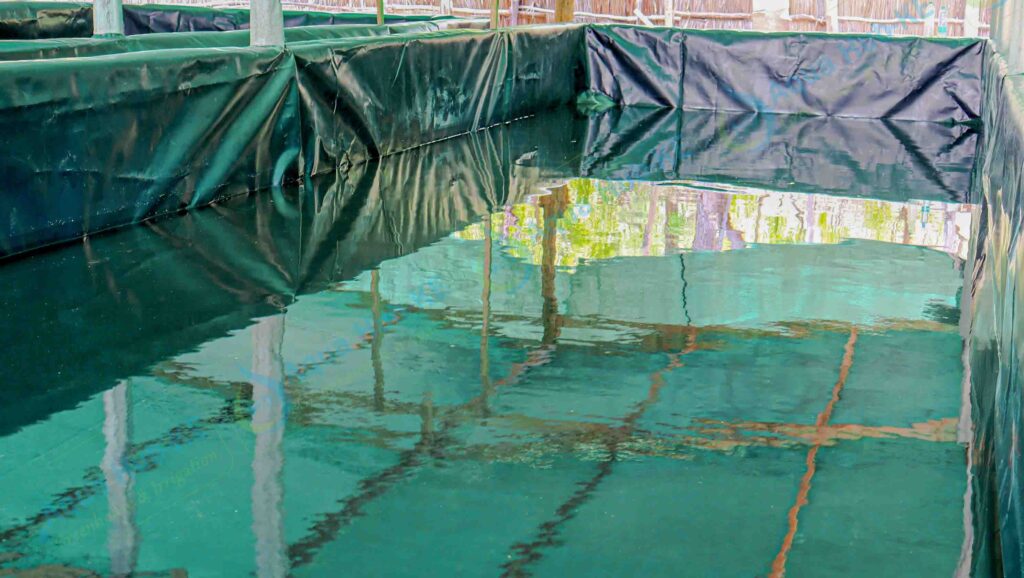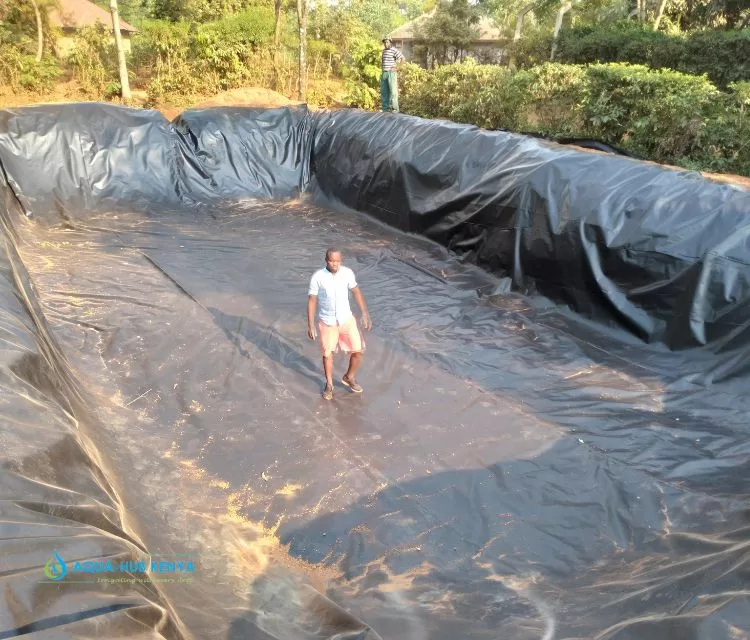Blog
Plastic Pond Liners at Affordable Rates
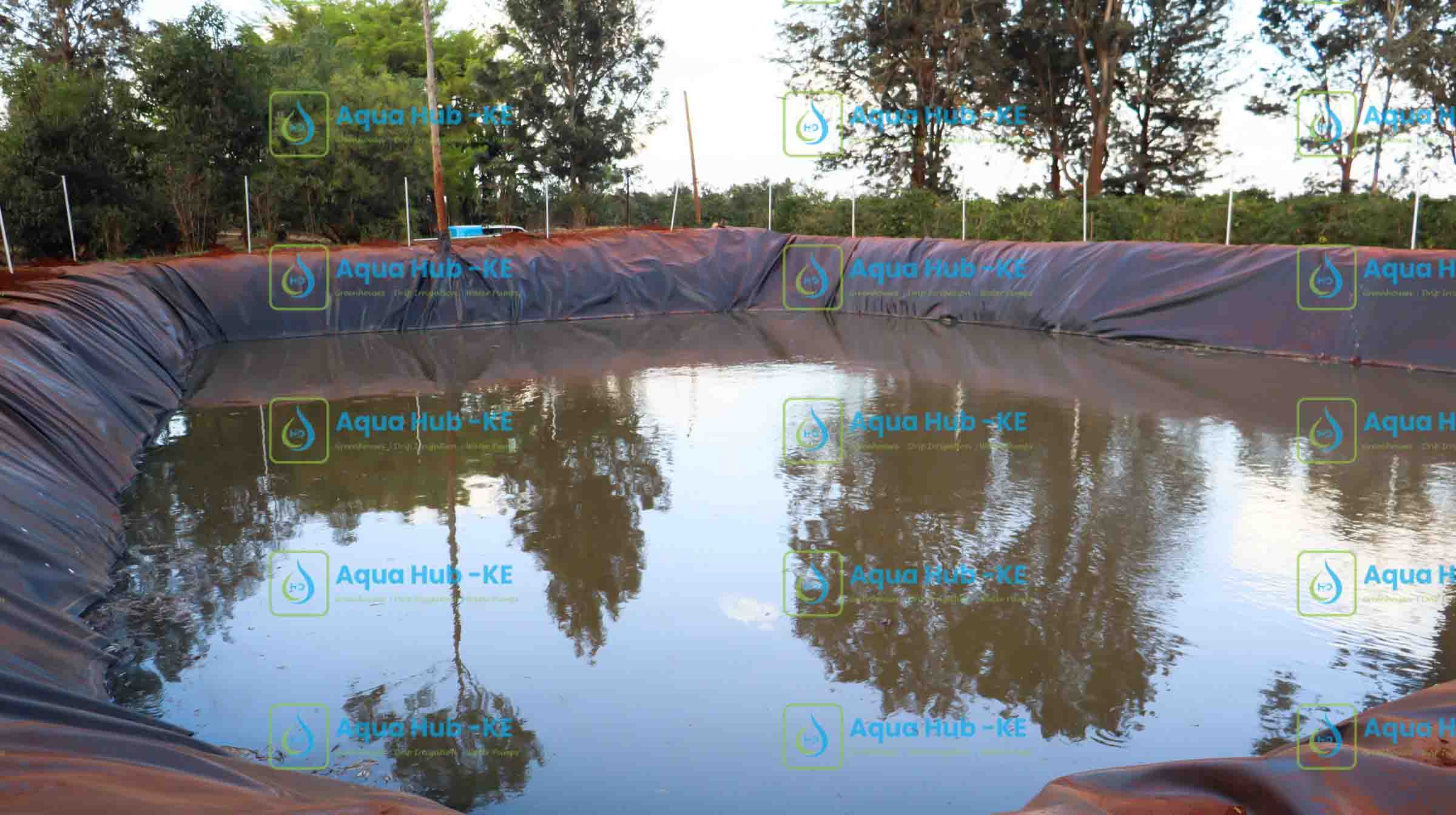
Plastic pond liners are vital components that have proven vital in water level conservation in both fishponds and reservoirs. With many pond liners available on the market, Aqua Hub LTD strives to ensure farmers get quality purpose liners at fair prices.
To ensure your project is done fast and meets quality standards, engage with us for installation services. We are the top leading dealer of plastic pond liners sales, welding and installation in Kenya and East Africa at large.
Call 0790719020
Why You Should Line Your Pond
Fish rearing often requires freshwater accumulation to ensure breeding, growth and survival of fish species. A pond liner protects water from underground seepage which happens especially in regions with loam or sandy soils. In the past, fish farming could only be done in regions with water retentive or clay soil near rivers.
With pond liners, you can now breed fish in any place so long as you access fresh water supply.
Pond liners when laid and installed properly:
- maintains water levels
- prevent soil accumulation in the pond
- keeps the water clean and safe for fish breeding.
Plastic Pond Liners in Kenya
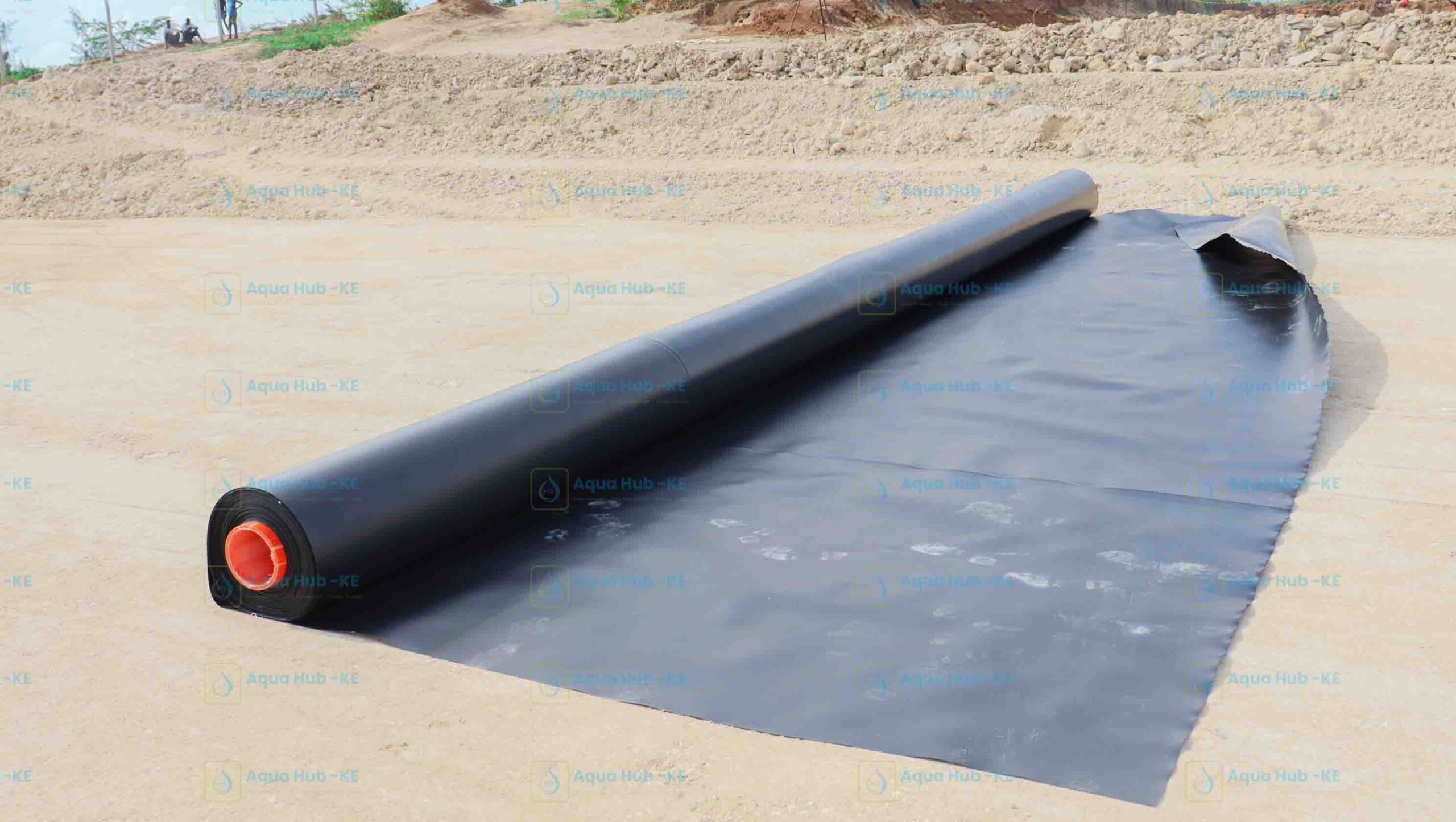
Pond Liners in Kenya are products of durable plastic polymers such as High-Density Polyethylene (HDPE), Polyvinyl Chloride (PVC), and Low-Density Polyethylene (LDPE).
Their excellent waterproof nature, rigid strength and durability makes them useful in ornamental ponds, reservoirs and even sewage containment.
Features of Plastic Pond Liners
- Impermeable – 90 percent of water containment projects use pond liners.
- Long term performance – Couple of plastic polymers work properly for many years. Pond liners exhibit the same durable experience.
- Chemical Resistance – the pond liner materials can withstand acids, alkalis and sewage waste without corrosion, burns or damage.
- Density – pond liners are slightly heavy but varies with thickness. The weight enables resistance to removal or being carried away by water tides.
- Thickness – pond liners are available in sizes of 0.3mm, 0.5mm, 0.75mm and 1 mm.
Understanding Different Materials to Line Ponds
Pond liners come in different types, all suitable for use in pond and water reservoirs. The common types are:
High Density Polyethylene Liners (HDPE)
Pond liners designed from High density polythene materials suitable for areas with very rocky terrain. They are durable for 20 – 35 years due to UV treated nature which makes them resistant to high radiation.
Also vital for large projects including residential dams, sewage treatment reservoirs and community water dams.
HDPE liners have 95 % chemical resistance thus applicable for handling hazardous industrial chemical waste.
Also has tear resistance, making them leakproof surface material.
PVC Pond Liners
Polyvinyl chloride liners are also suitable for water containment because of their resistance and waterproof properties.
They are less durable than HDPE liners but also resistant to water seepage.
It is commonly used in small ponds, swimming pools and small ornamental ponds.
PVC liners can last for 15 – 20 years if proper care is adhered to. Because of their affordable costs and less tensile strength it is best for less critical applications.
LDPE Liners
LDPE liners are manufactured from Low density polythene material which is a compound of thermostatic polymers.
Design is waterproof, black and light in weight with high flexibility that makes installation easier.
Last for about 15 – 30 years while in good condition.
LDPE liners are reliable for use in fishpond lining and offer the best alternative to HDPE liners.
Common Applications of Plastic Pond Liners
Fishpond Lining – HDPE Liners are the main material for Pond lining in Kenya. Fishpond lining projects are among the vital applications that require pond liners. Fish survival and health generally require use of standard grade liners.
Containment of water waste – HDPE liners prevent contaminants from flowing to waterbodies or damaging the soil. Pond liners reduce cost of concrete reservoirs by 30%.
Ornamental Pond protection – Light PVC and LDPE liners are ideal for covering and protecting ornamental ponds from water loss and growth of reeds.
Considerations before installation of a pond Liner
- Size of the pond – the dimensions of the pond are needed when calculating the size of the pond liner required.
- Soil structure – the porosity and texture of the soil also matters.
- Anchorage of the liner – the way used to hold the dam liner in place affects the size. When calculating the size of a pond liner, an extension of 0.5 m is left on all sides for holding the liner onto the ground.
Steps for Pond Liner Installation
Step 1: Clear and prepare the pond
Excavate the pond either by an excavator or by manual digging. Get rid of rocks, tree roots or stones that could affect the liner placement.
Step 2: Add a Protective Underlayment
A smooth layer of fabric or sand is often added to the ground surface to make it suitable for liner installation.
Step 3: Dig trenches around the pond
Make trenches 30 cm from the edge of the pond for anchoring the dam liner to stay on the ground. The trenches are often 1 m deep to ensure the liner remains firmly held to the ground.
Step 4: Lay the Liner
Unroll the liner and pull it gently over the pond from one end to the other. Tuck in the liner to fit all corners in the base of the pond. Ensure it touches the flow uniformly in all surfaces leaving no wrinkles.
Step 4: Bury the extension of the liner to the trench
Tuck the extension of the pond liner to the trench and bury the trench using soil. You can also hold the liner to the ground by placing heavy weights or stones on the liner extension.
Step 5: Fill the Pond
Pump water to the pond immediately after installation and check the water level after 2 hours. If the level drops, there is a leakage and needs to be repaired.
Step 6 : fence the pond
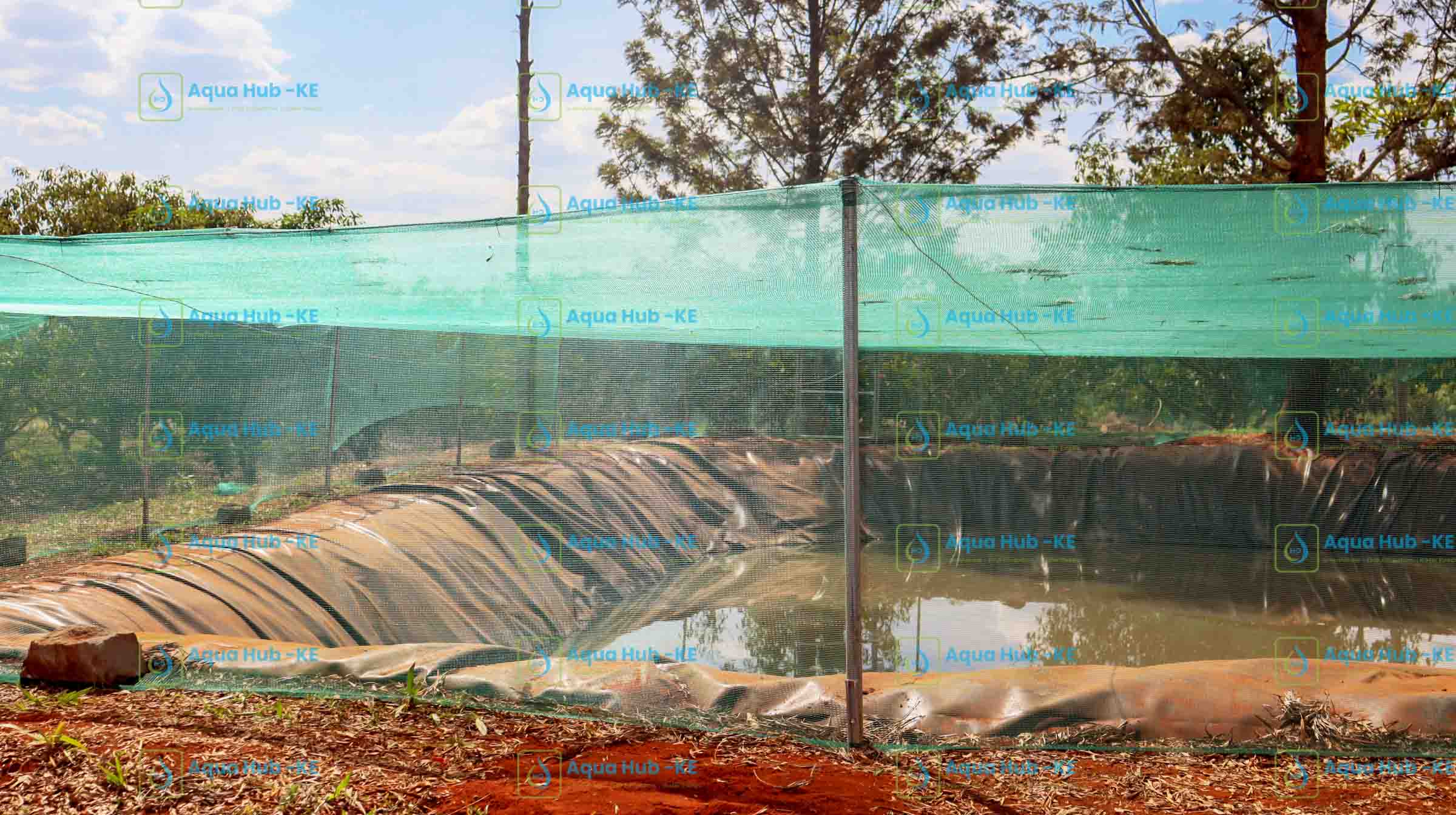
The pond needs to be fenced to prevent predator birds, debris or for safety measures. You can use steel metal pipes and a bird net to build a barrier around the pond.

